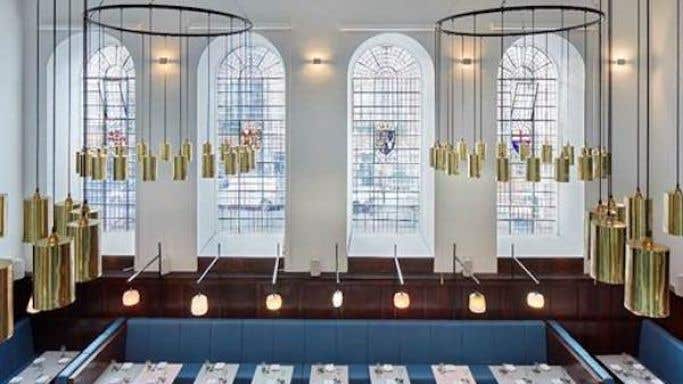Perhaps it is to do with the time of year but increasingly I am asked what is my favourite style of cooking? I have no hesitation in my reply. ‘Chinese', I respond immediately, ‘and Cantonese in particular'.
This is predominantly due to a long, and complex, interaction with Chinese cooking in general – how do the cooks braise meat so well and get such exceptional flavours out of the fish – as well as a heartfelt admiration for the subtlety of their dim sum and their treatment of vegetables. And in Cantonese cooking, the best cooks manage to do this without resorting to too much spice, an approach that even takes in some luscious desserts.
This style of cooking I have long associated with Hong Kong, ever since my first visit there in 1976. And since 2013 I have also felt that this style of cooking, often considered the most subtle style of Chinese cooking, was best exemplified at Duddell’s restaurant, named after the street it is located in, in the city’ s Central District.
Nobody, therefore, could have been happier than I was when I heard that Duddell’s were to open a second restaurant in London. I had certain misgivings – moving a particular style of cooking 10,000 kilometres is never an easy logistical step – but if it were to spread the charms of this style of cooking, as well as making it easier for me to enjoy Cantonese cooking, something distinctly absent from London, then I, for one, would be very happy.
I have now eaten twice at Duddell’s in London and on each occasion I have left somewhat disappointed. This is only partly due to the fact that the restaurant has opened on a street in London, very close to The Shard, that will be a building site for several months to come. In fact I was so lost on this occasion that I had to ask a construction worker, wearing a hard hat and orange jacket, to show me the entrance.
And this feeling is also only in part due to the management’s brave but perhaps over-ambitious decision to take over what was a deconsecrated church. St Thomas’s Church must have struck a chord with the company’s owners, a very different, much older and more atmospheric setting than their original restaurant, which is located in a converted set of offices and where the low ceilings certainly add to the restaurant’s noise levels.
But here the opposite is the case. The building is tall, with plenty of wood panelling around to offset the newer and more modern fittings, but in fact it seems at times too large – it is certainly a long walk down the stairs to the lavatories in the basement even from the ground floor.
And unfortunately this is where they have, perforce, decided to locate the kitchen. So there is no place for cooks in front of smouldering woks but rather an electric lift linking the kitchen to the restaurant, where the waiters are wired up with earpieces to follow instructions from down below.
To this must be added two further sources of irritation. The first is the music, playing at lunchtime and in the evening, which is loud, set to an incessant beat that makes conversation difficult. And while the building is full of light during the day, the lighting is set so low in the evening that reading the menu is very difficult. And not just for the over 60s, as in my case, but also for the much younger chef from Araki restaurant on the next table to us: his menu suddenly caught fire as he had held it too close to the open flame of the candle on his table.
My first meal was dim sum at lunch. The hot and sour soup with prawns was as described, served in a bowl with a lid, as was the har gau and the crisp char sui bun that had retained their heat as they came in the correct dim sum baskets. But the service, I could not help but notice, seemed laborious as every dish was unloaded from the lift, inspected, put on to a tray before being brought over.
In the evening we decided to concentrate on chef Daren Liew’s recommendations and ordered the honey glazed pork, the last portion of the Cantonese soya chicken, the Yin Yang prawns, a serving of Cantonese soya noodles and some bok choy, which, with two glasses of 2016 Bernkastel Riesling, cost me £128.25.
Of these, the prawns were the best, succulent and rich, although the heat of the prawns, promised on the menu, had somewhat diminished by the time the dish reached us. The chicken and the soya noodles were equally good, the pork sliced perhaps too thickly while the bok choy was significantly under-seasoned. We did not stay for dessert as Liew seems to have eschewed the distinctive Cantonese style of warm milk-based puddings, or fruit, for an all cold range that tries to fuse Western and Eastern ingredients, such as in a crème brûlée with tangerine skin.
The wine list would also be improved by more glasses of reasonably priced white wine instead of an extensive range of expensive Mouton Rothschild and the temptation of Ao Yun 2014, the Chinese equivalent, at £540 per bottle.
Transporting a definitive style of cooking over such a distance is a very tricky endeavour and I remain unconvinced that Duddell’s London has managed to pull it off so far.
Duddell’s 9A St Thomas Street, London SE1 9RY; tel +44 (0)20 3957 9932

